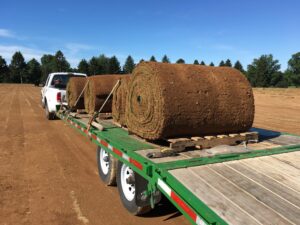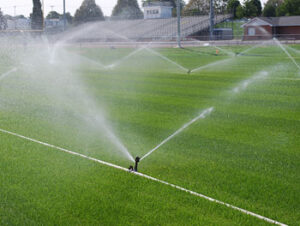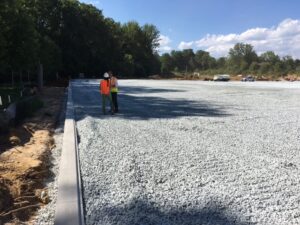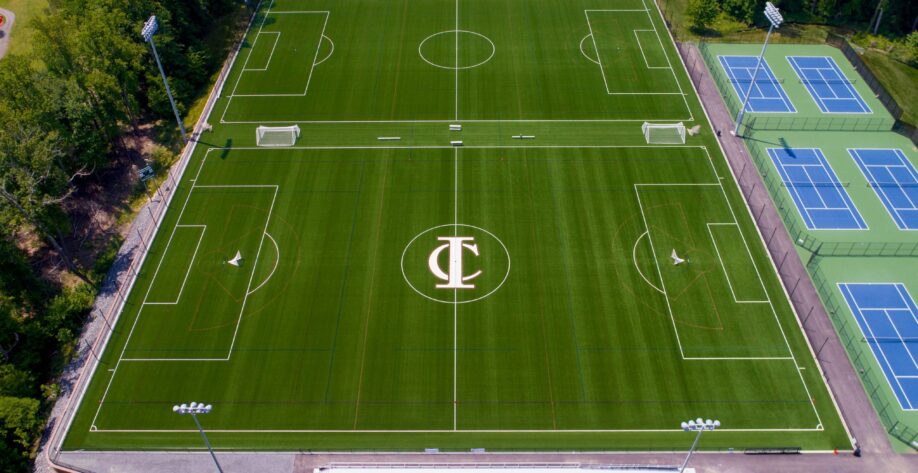Undertaking an athletic field construction project requires thorough research to choose the playing surface for the field that best aligns with the athletic program’s goals and budgets. When considering the construction of a competition level athletic field, it is important to understand the basic differences, and advantages/disadvantages, between natural turf and synthetic turf fields.

Natural Turf Fields:
Environmental Benefits: A natural turf field reduces excess stormwater surface runoff by allowing water to infiltrate into the soil, additionally, the surface temperatures of natural grass are markedly cooler than synthetic turf.
Limitations: Overuse and excessive traffic on natural turf can lead to compaction and bare spots. Inclement weather can lead to overly saturated soils or standing water which limits playability, or the fields may experience irreparable damages if played on when saturated.
Turfgrass Types: Cool Season and Warm Season: Cool Season grasses are prevalent in the northern regions of the U.S. and typically consist of Kentucky Bluegrasses, Perennial Ryegrasses, and Tall Fescues. The Warm Season grasses, which are prevalent in the southern regions of the U.S., are the Bermudagrasses.
Natural Turf Field Construction: Natural turf athletic fields can generally be classified into three types of construction:
- Natural with Native or Amended Soils
- Sand Cap Over Native Soils
- Sand-Based Rootzone

Irrigation: To keep the field in optimal playing condition, irrigation is essential.
Maintenance: A rigorous maintenance program is important to maintain a consistent and attractive playing surface, promote player safety and to protect the turf & root systems.
Synthetic Turf Fields:
Benefits: A synthetic turf field provides a durable playing surface with a grass-like look and requires lower maintenance than natural turf. Synthetic turf fields are well drained, can be plowed in snowy conditions, have near all-weather availability for play, and the field lines and markings can be permanently inlaid, which eliminates the need for continual re-striping with paint.
Limitations: Synthetic turf fields are more expensive to install than natural turf fields. They have a higher surface temperature and do not filter air or water pollutants as natural turf does.

Elements of Synthetic Turf Fields:
Turf Carpet: The carpet fiber materials are manufactured from either polyethylene, polypropylene or nylon materials and are produced into fiber strands known as “slit film” or “monofilament”. The blending of slit film and monofilament together, known as a “dual fiber” system has become popular for multi-sport fields and provides a versatile, durable playing surface.
- Turf Infill:The most common infill material has typically consisted of a blend of a blend of silica sand and recycled crumb rubber (SBR). As the synthetic turf industry has progressed with thorough research, a number of “alternate” infills have been developed and introduced to the market, and appear to offer viable options for consideration.
- Impact Attenuation Pad:The attenuation pad is a resilient layer that is incorporated between the base stone and the turf carpet. This layer helps to support performance characteristics, control ball bounce, and is designed to reduce player impact and injuries.
For a more in-depth discussion regarding natural v. synthetic turf athletic fields (PDF) click here.
Tagged In:
Athletic Facilities Planning & Design
